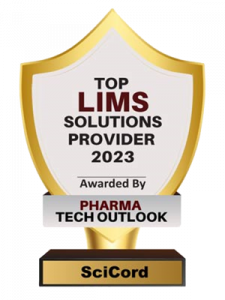LIMS and ELN
Advantages of LIMS/ELN Implementation in Inhaled Drug Development
Laboratory Information Management Systems (LIMS) and Electronic Laboratory Notebooks (ELN) play a pivotal role in modern pharmaceutical research and development, including inhaled drug development. Implementing these digital solutions offers numerous advantages that enhance efficiency, data management, collaboration, and regulatory compliance. This section explores the specific benefits of LIMS and ELN implementation in the context of inhaled drug development.
Data Management and Centralization
Advantage 1: Improved Data Organization and Accessibility
In inhaled drug development, data generated from various sources, including formulation studies, analytical testing, manufacturing processes, and quality control, can be extensive and complex. LIMS and ELN provide a centralized platform for organizing and managing this data. Key advantages include:
Data Accessibility: Researchers and stakeholders can access data in real-time, irrespective of their location. This facilitates collaboration between cross-functional teams, including scientists, engineers, and regulatory professionals.
Data Standardization: LIMS and ELN enable standardized data entry and storage, reducing errors and ensuring consistency across experiments and studies.
Audit Trails: Robust audit trail functionalities enhance data integrity by tracking changes and providing a historical record of data modifications.
Compliance and Regulatory Reporting
Advantage 2: Streamlined Regulatory Compliance
In the highly regulated pharmaceutical industry, compliance with Good Laboratory Practices (GLP), Good Manufacturing Practices (GMP), and other regulatory standards is paramount. LIMS and ELN aid in achieving and maintaining compliance in several ways:
Automated Workflows: These systems can enforce standard operating procedures (SOPs) and compliance requirements through automated workflows, ensuring that tasks are executed correctly and according to regulatory guidelines.
Data Traceability: LIMS and ELN offer detailed data traceability, allowing organizations to demonstrate data integrity, adherence to protocols, and compliance with regulatory standards during audits and inspections.
Electronic Signatures: Electronic signatures enable secure and compliant record-keeping, replacing traditional handwritten signatures while providing a high level of security and authenticity.
Efficiency and Productivity
Advantage 3: Enhanced Workflow Efficiency
Inhaled drug development involves a series of complex processes, from formulation development to manufacturing and quality control. LIMS and ELN systems optimize workflow efficiency in several ways:
Task Automation: Routine, repetitive tasks such as data entry, calculations, and report generation can be automated, reducing manual effort and minimizing the risk of errors.
Sample Management: LIMS simplifies sample tracking and management, ensuring that samples are properly labeled, stored, and analyzed, reducing the likelihood of sample mix-ups.
Real-Time Monitoring: Researchers can monitor experiments and processes in real-time, enabling immediate adjustments and reducing the risk of process deviations or failures.
Collaboration and Data Sharing
Advantage 4: Facilitated Collaboration and Data Sharing
In inhaled drug development, collaboration among interdisciplinary teams is critical. LIMS and ELN systems promote collaboration and data sharing by:
Real-Time Collaboration: Researchers from different locations can collaborate in real-time, share data, and make collective decisions, improving the efficiency of the drug development process.
Data Integration: These systems can integrate data from various sources, such as analytical instruments, allowing for a comprehensive view of the project’s progress.
Remote Access: Researchers can access data remotely, which is particularly valuable for organizations with multiple research sites or for individuals who need to work off-site.
Data Analysis and Reporting
Advantage 5: Advanced Data Analysis and Reporting
LIMS and ELN systems enable advanced data analysis and reporting capabilities, which are particularly valuable in inhaled drug development:
Data Visualization: These systems can generate charts, graphs, and reports that aid in data interpretation, trend analysis, and decision-making.
Statistical Analysis: Advanced statistical tools can be integrated into LIMS and ELN for in-depth data analysis, hypothesis testing, and optimization of experimental parameters.
Custom Reports: Organizations can create customized reports that meet their specific requirements for internal analysis, as well as for regulatory submissions.
Data Security and Disaster Recovery
Advantage 6: Enhanced Data Security and Disaster Recovery
In the pharmaceutical industry, safeguarding sensitive research and development data is paramount. LIMS and ELN systems offer robust data security and disaster recovery features:
Role-Based Access Control: Data access is restricted to authorized personnel based on their roles, ensuring that sensitive information is not compromised.
Data Backup: Automated data backup and disaster recovery mechanisms protect against data loss due to hardware failures or unforeseen events.
Data Encryption: These systems employ encryption protocols to secure data during transmission and storage.
Scalability and Adaptability
Advantage 7: Scalability and Adaptability to Evolving Needs
LIMS and ELN systems are designed to accommodate the evolving needs of pharmaceutical organizations. As inhaled drug development projects progress, these systems can be scaled and adapted to:
Accommodate Growth: Organizations can add additional modules or storage capacity to accommodate the growth of data and research activities.
Incorporate New Technologies: LIMS and ELN can integrate with new analytical instruments and technologies as they become available.
Support Changing Workflows: The flexibility of these systems allows for the customization of workflows to meet changing project requirements and industry trends.
In conclusion, the implementation of LIMS and ELN systems in inhaled drug development offers a multitude of advantages, including improved data management, streamlined regulatory compliance, enhanced workflow efficiency, facilitated collaboration, advanced data analysis, enhanced data security, and adaptability to evolving needs. These digital solutions are invaluable in optimizing research and development processes, enhancing productivity, and ultimately contributing to the successful development and commercialization of inhaled drug products.




